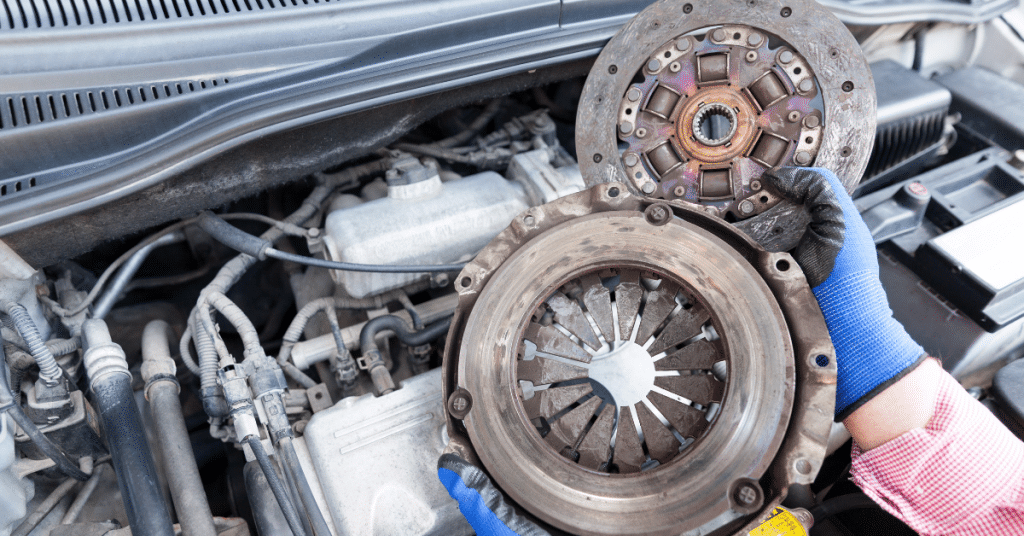Your dashboard warning lights are your vehicle’s way of communicating with you, acting as an early warning system that can prevent minor issues from becoming major catastrophes. Yet many drivers either ignore these crucial signals or panic unnecessarily when they appear. Understanding what these lights actually mean—and knowing when to seek professional car diagnostics—can save you thousands of pounds in repair costs whilst keeping you safe on the road.
Modern vehicles contain sophisticated monitoring systems that constantly check dozens of components and systems. When something isn’t operating within normal parameters, your car’s computer triggers a warning light to alert you. The key is understanding which warnings require immediate attention and which can wait for scheduled maintenance, plus knowing when professional diagnosis is essential for accurate problem identification.
How Modern Car Diagnostics Work
The Science Behind Warning Systems
Today’s vehicles are essentially computers on wheels, with multiple electronic control units (ECUs) monitoring everything from engine performance to airbag systems. These computers constantly receive data from hundreds of sensors throughout your vehicle, comparing actual performance against predetermined parameters stored in the system’s memory.
When a sensor detects readings outside normal ranges, the ECU stores a diagnostic trouble code (DTC) and triggers the appropriate warning light. This process happens in milliseconds, providing real-time monitoring of your vehicle’s health. Professional car diagnostics equipment can read these stored codes, providing technicians with precise information about what’s causing the warning.
The sophistication of modern diagnostic systems means that warning lights often appear before you notice any symptoms. This early warning capability is designed to prevent damage by alerting you to problems while they’re still manageable and less expensive to resolve.
Understanding Diagnostic Trouble Codes
Professional car diagnostics involve connecting specialised equipment to your vehicle’s onboard diagnostic port (OBD-II). This process retrieves stored trouble codes that correspond to specific systems and components. Each code provides detailed information about the nature and location of detected problems.
However, diagnostic codes don’t always tell the complete story. A skilled technician interprets these codes alongside physical inspection and testing to determine root causes. This is why professional diagnosis at a qualified motor garage is often necessary—the codes point toward problems, but experience and expertise are required to identify solutions.
Critical Warning Lights: Immediate Action Required
Engine Temperature Warning Light
The engine temperature warning light, typically showing a thermometer in liquid or the word “TEMP,” indicates your engine is overheating. This is one of the most serious warnings you can receive, as continued driving can cause catastrophic engine damage within minutes.
What it means: Your engine coolant temperature has exceeded safe operating limits. This could indicate coolant leaks, thermostat failure, water pump problems, or cooling fan malfunctions.
Immediate action: Stop driving immediately and turn off the engine. Allow the vehicle to cool completely before checking coolant levels. Do not remove the radiator cap while the engine is hot, as pressurised coolant can cause severe burns.
Professional diagnosis: Engine overheating can result from multiple causes, and accurate diagnosis requires pressure testing the cooling system, checking thermostat operation, and testing cooling fan circuits.
Oil Pressure Warning Light
The oil pressure warning light, usually depicted as an oil can or the word “OIL,” indicates insufficient oil pressure reaching vital engine components. This warning requires immediate attention, as inadequate lubrication can destroy your engine in a matter of minutes.
What it means: Your engine oil pressure has dropped below safe operating levels. Causes include low oil level, oil pump failure, blocked oil filters, or worn engine bearings.
Immediate action: Stop driving immediately and check your oil level using the dipstick. If oil level is adequate, do not continue driving—have your vehicle recovered to avoid engine damage.
Professional diagnosis: Oil pressure problems require comprehensive testing to determine whether the issue is mechanical (worn components) or system-related (blocked filters, faulty oil pump).
Brake System Warning Light
The brake warning light, typically showing the word “BRAKE” or a circle with exclamation marks, indicates problems with your braking system. Given the critical safety implications, this warning demands immediate professional attention.
What it means: Possible causes include low brake fluid, worn brake pads, brake system leaks, or electronic brake system malfunctions. Some vehicles have separate warnings for different brake system components.
Immediate action: Check brake fluid levels if accessible, but avoid driving unless absolutely necessary. Test brakes gently at low speed to assess pedal feel and stopping capability.
Professional diagnosis: Brake system problems require comprehensive inspection of hydraulic components, brake pad thickness, disc condition, and electronic systems where fitted.
Important Warning Lights: Prompt Attention Needed
Check Engine Light (Engine Management Light)
The check engine light, often showing an engine outline or “CHECK ENGINE” text, is probably the most misunderstood warning on your dashboard. This light indicates the engine management system has detected an issue affecting performance or emissions.
What it means: The engine control unit has detected a fault that could affect engine performance, fuel efficiency, or emissions. Problems range from minor sensor faults to serious mechanical issues.
Response required: While not usually requiring immediate stoppage, continued driving without diagnosis can worsen problems and increase repair costs. Schedule professional car diagnostics promptly.
Professional diagnosis: Engine management problems require sophisticated diagnostic equipment to read fault codes and perform system testing. Multiple sensors and components can trigger this warning, making professional analysis essential.
Battery/Charging System Warning Light
The battery warning light, typically showing a battery symbol or “ALT,” indicates problems with your vehicle’s charging system. This doesn’t necessarily mean your battery is faulty—often the alternator or charging circuitry is at fault.
What it means: Your battery isn’t receiving adequate charge from the alternator, or there’s a fault in the charging system circuitry. Without proper charging, your battery will eventually drain completely.
Response required: You can usually continue driving for a short distance, but avoid using unnecessary electrical equipment. Seek diagnosis promptly, as charging system failure will eventually leave you stranded.
Professional diagnosis: Charging system problems require testing battery condition, alternator output, and charging circuit integrity to identify the root cause.
ABS Warning Light
The ABS (Anti-lock Braking System) warning light indicates a fault with your vehicle’s ABS system. While your conventional brakes still function, you lose the safety benefits of ABS intervention during emergency braking.
What it means: The ABS system has detected a fault in wheel speed sensors, hydraulic components, or control modules. Your brakes will still work, but without ABS assistance.
Response required: You can continue driving carefully, but avoid emergency braking situations where ABS would normally help maintain steering control. Seek diagnosis when convenient.
Professional diagnosis: ABS faults require specialised diagnostic equipment to test sensors, hydraulic components, and control modules.
Informational Warning Lights: Monitor and Plan
Tyre Pressure Monitoring System (TPMS)
The TPMS warning light, showing a tyre outline with an exclamation mark, indicates one or more tyres have pressure significantly below recommended levels. This system helps maintain optimal tyre performance and safety.
What it means: Tyre pressure in one or more tyres has dropped below the threshold programmed into the system, typically around 25% below recommended pressure.
Response required: Check and adjust tyre pressures as soon as convenient. Driving on under-inflated tyres reduces fuel efficiency and increases tyre wear.
Professional diagnosis: Persistent TPMS warnings after pressure correction may indicate sensor faults, requiring specialised diagnostic equipment.
Service/Maintenance Required Light
Service lights, often showing a spanner symbol or “SERVICE” text, indicate scheduled maintenance is due based on mileage or time intervals programmed into your vehicle’s computer.
What it means: Your vehicle has reached predetermined service intervals and requires routine maintenance to maintain optimal performance and reliability.
Response required: Schedule car servicing at your convenience, but don’t delay excessively as overdue maintenance can lead to more serious problems.
Professional diagnosis: While not indicating immediate faults, service intervals exist to prevent problems through preventive maintenance.
The Importance of Professional Car Diagnostics
Why DIY Diagnosis Falls Short
While online searches and code readers can provide basic information about warning lights, they rarely tell the complete story. Modern vehicles contain interconnected systems where one fault can trigger multiple warning lights, making accurate diagnosis challenging without professional expertise.
Generic fault codes often point toward symptoms rather than root causes. For example, an oxygen sensor fault code might indicate a faulty sensor, but the actual problem could be an exhaust leak, fuel system issue, or engine management problem affecting sensor readings.
Professional technicians combine diagnostic code information with physical inspection, system testing, and experience to identify actual causes rather than just symptoms. This comprehensive approach prevents unnecessary parts replacement and ensures effective repairs.
Advanced Diagnostic Capabilities
Modern motor garages invest in sophisticated diagnostic equipment that goes far beyond basic code readers. Professional systems can perform active testing, component activation, and real-time data monitoring to thoroughly evaluate system performance.
Live data analysis allows technicians to observe sensor readings and system responses under various operating conditions. This capability is essential for diagnosing intermittent faults that might not trigger stored codes but still affect vehicle performance.
Manufacturer-specific diagnostic software provides detailed troubleshooting procedures and technical service bulletins addressing known issues. This information is invaluable for efficient, accurate diagnosis and repair.
When to Seek Car Diagnostics Near Me
Immediate Professional Attention Required
Certain warning light combinations always require immediate professional attention. Multiple warning lights appearing simultaneously often indicate serious electrical or engine management problems that could leave you stranded or cause expensive damage.
Flashing warning lights typically indicate more serious problems than steady lights. A flashing check engine light, for example, usually indicates severe engine misfiring that can damage catalytic converters if ignored.
Any warning light accompanied by unusual symptoms—strange noises, vibrations, performance changes, or handling problems—requires prompt professional diagnosis to prevent potentially dangerous situations.
Preventive Diagnostic Benefits
Regular diagnostic checks, even without warning lights, can identify developing problems before they cause failures. Many motor garages offer comprehensive diagnostic scans as part of routine servicing, providing early warning of potential issues.
Preventive diagnostics are particularly valuable for older vehicles where age-related component failures become more common. Early identification allows you to plan repairs around your schedule and budget rather than dealing with unexpected breakdowns.
Professional diagnostics also help maintain vehicle warranty coverage by identifying issues before they cause consequential damage. Many warranty claims are denied when regular maintenance and prompt attention to warning lights can’t be demonstrated.
The Cost of Ignoring Warning Lights
Minor Problems Become Major Expenses
The most expensive automotive repairs often result from ignoring early warning signs. A £50 thermostat replacement can become a £3,000 engine rebuild if overheating warnings are ignored. Similarly, a £30 oxygen sensor replacement can lead to catalytic converter damage costing over £1,000.
Warning lights exist specifically to prevent this escalation of problems. The temporary inconvenience and modest cost of professional diagnosis pale compared to the expense of major component replacement resulting from neglect.
Safety Implications
Beyond financial considerations, ignoring warning lights can compromise your safety and that of other road users. Brake system warnings, ABS faults, or power steering problems can all contribute to accidents if left unaddressed.
Modern vehicle safety systems work together to protect occupants during normal driving and emergency situations. Warning lights often indicate when these safety systems aren’t functioning properly, leaving you vulnerable when you need protection most.
Choosing the Right Diagnostic Service
What to Look for in Professional Diagnosis
When searching for “car diagnostics near me,” consider more than just proximity and price. Look for motor garages with technicians trained on your vehicle make, up-to-date diagnostic equipment, and transparent pricing policies.
Ask about the diagnostic process and what’s included in diagnostic fees. Comprehensive diagnosis should include fault code reading, system testing, and detailed explanation of findings with repair recommendations and cost estimates.
Ensure the garage provides written diagnostic reports detailing problems found, recommended repairs, and priority levels. This documentation helps you make informed decisions about repairs and maintenance scheduling.
Building Long-term Relationships
Establishing a relationship with a trusted local motor garage provides numerous benefits beyond individual diagnostic services. Technicians familiar with your vehicle’s history can spot patterns and provide more accurate diagnosis of recurring issues.
Regular customers often receive priority scheduling, competitive pricing, and advance notice of potential problems identified during routine maintenance. This relationship-based approach to vehicle care helps prevent problems and reduces long-term ownership costs.
Conclusion: Your Dashboard Speaks—Are You Listening?
Dashboard warning lights are sophisticated communication tools designed to protect your investment and ensure your safety. Understanding what these lights mean and responding appropriately can save you significant money whilst preventing dangerous situations.
The key is recognising that warning lights are opportunities for prevention rather than causes for panic. Prompt professional car diagnostics when warnings appear allows you to address problems while they’re still manageable and affordable.
Don’t let fear or procrastination turn minor issues into major expenses. When warning lights appear, listen to what your vehicle is telling you and seek professional diagnosis promptly. Your safety, your wallet, and your peace of mind depend on taking these warnings seriously and acting on them appropriately.
Remember, every warning light ignored is a potential breakdown waiting to happen. By understanding what your dashboard is telling you and responding with appropriate professional care, you ensure your vehicle serves you reliably for years to come.








